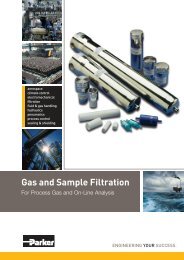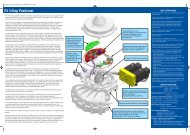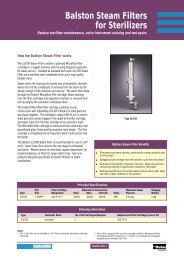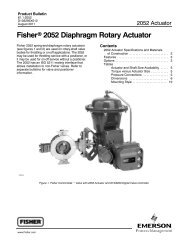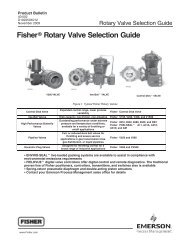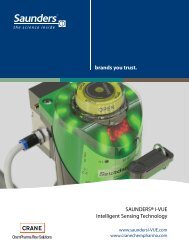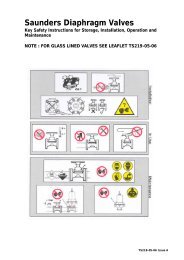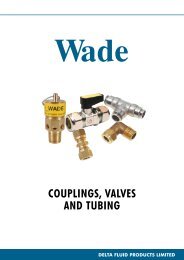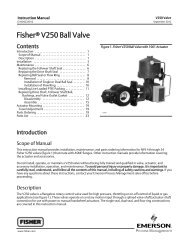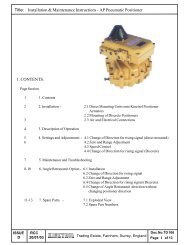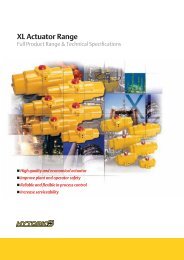Fisher® FIELDVUE DVC6200 Digital Valve Controller
Fisher® FIELDVUE DVC6200 Digital Valve Controller
Fisher® FIELDVUE DVC6200 Digital Valve Controller
Create successful ePaper yourself
Turn your PDF publications into a flip-book with our unique Google optimized e-Paper software.
Instruction Manual<br />
D103605X012<br />
Maintenance and Troubleshooting<br />
July 2012<br />
Section 6 Maintenance and Troubleshooting66<br />
The <strong>DVC6200</strong> digital valve controller enclosure is rated Type 4X and IP66, therefore periodic cleaning of internal<br />
components is not required. If the <strong>DVC6200</strong> is installed in an area where the exterior surfaces tend to get heavily<br />
coated or layered with industrial or atmospheric contaminants, however, it is recommended that the vent (key 52) be<br />
periodically inspected to ensure it is fully open. If the vent appears to be clogged, it can be removed, cleaned and<br />
replaced. Lightly brush the exterior of the vent to remove contaminants and run a mild water/detergent solution<br />
through the vent to ensure it is fully open. Allow the vent to dry before reinstalling.<br />
WARNING<br />
Personal injury or property damage can occur from cover failure due to overpressure. Ensure that the housing vent<br />
opening is open and free of debris to prevent pressure buildup under the cover.<br />
WARNING<br />
To avoid static discharge from the plastic cover when flammable gases or dust are present, do not rub or clean the cover<br />
with solvents. To do so could result in a spark that may cause the flammable gases or dust to explode, resulting in personal<br />
injury or property damage. Clean with a mild detergent and water only.<br />
WARNING<br />
Avoid personal injury or property damage from sudden release of process pressure or bursting of parts. Before performing<br />
any maintenance procedures on the <strong>DVC6200</strong> digital valve controller:<br />
Always wear protective clothing, gloves, and eyewear.<br />
Do not remove the actuator from the valve while the valve is still pressurized.<br />
Disconnect any operating lines providing air pressure, electric power, or a control signal to the actuator. Be sure the<br />
actuator cannot suddenly open or close the valve.<br />
Use bypass valves or completely shut off the process to isolate the valve from process pressure. Relieve process pressure<br />
from both sides of the valve.<br />
Vent the pneumatic actuator loading pressure and relieve any actuator spring precompression.<br />
Use lock‐out procedures to be sure that the above measures stay in effect while you work on the equipment.<br />
Check with your process or safety engineer for any additional measures that must be taken to protect against process<br />
media.<br />
WARNING<br />
When using natural gas as the supply medium, or for explosion proof applications, the following warnings also apply:<br />
Remove electrical power before removing the housing cap. Personal injury or property damage from fire or explosion<br />
may result if power is not disconnected before removing the cap.<br />
Remove electrical power before disconnecting any of the pneumatic connections.<br />
When disconnecting any of the pneumatic connections or any pressure retaining part, natural gas will seep from the<br />
unit and any connected equipment into the surrounding atmosphere. Personal injury or property damage may result<br />
55



